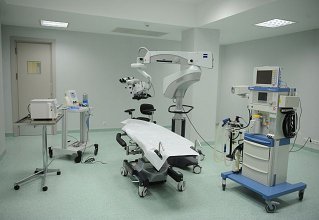www.zfenglish.com - Last update 01:10
Private Hospitals On The Rise. What It Takes To Build Them
10.04.2011
The fever of private hospital openings which has gripped Romanian investors in the last few years peaked in the first half of 2011, when projects worth a total of over EUR100 million were inaugurated.
The record of the past few years was set in the first half by investments in six private hospitals, according to calculations of Business Construct magazine. And a new hospital also means business for constructors.
The hospitals inaugurated in the first six months are the Sanador hospital (100% owned by Doris Andronescu), Sf. Constantin (a Brasov hospital whose shareholders include businessman Mihai Miron, with a 33% stake, who became known for his investments in the drug industry), eye hospital Europe Eye (with Turkish shareholders), Delta Hospital (held by eight Romanians, six of whom doctors), Muntenia Hospital (controlled by SIF Muntenia) and MedLife's children's hospital.
After the July and August torpor, the market of private medical services shows signs of revival in September, with a new inauguration. MedLife has invested EUR10 million in the opening of a 60-bed private hospital and in the acquisition of clinic Eva in Brasov, which, according to the company, is the largest maternity hospital in the region.
Dozens of permits are necessary to get a hospital going, starting with those from the Health Ministry, the public health department and going on with those from the inspectorate for emergency situations. These are just a few examples, with the number of and type of permits necessary varying from one situation to the next.
In addition, the equipment of the hospital is regulated through orders from the health minister, which stipulate for instance what each medical section needs to include, the maximum number of beds in a hospital room, the minimal equipment and the distance between beds.
There are almost 200 articles that include the norms on how a hospital needs to be equipped and set up.
Some requirements have to do with the air in an operating room, which needs to have a certain degree of filtration.
The emergence of hospital-acquired infections is related to air circulation. For instance, in a room where gynecological operations are performed, one cannot perform orthopedic operations, because the degree of air filtration differs.
Mihaela Calcan, development and communication director of Arcadia Hospital in Iasi, says when setting up a hospital, one also needs to consider the minimum useful area per bed, regulations concerning the equipment of medical offices and of other areas where medical services are performed.
Arcadia currently holds a seven-floor hospital with a total area of around 11,000 square meters. The same building accommodates Arcadia Hospital and interventional cardiology hospital Arcadia Cardio, which have an overall capacity of 80 side rooms.
(English version by Daniela Stoican)

